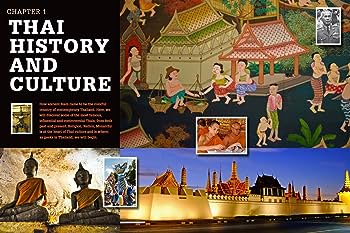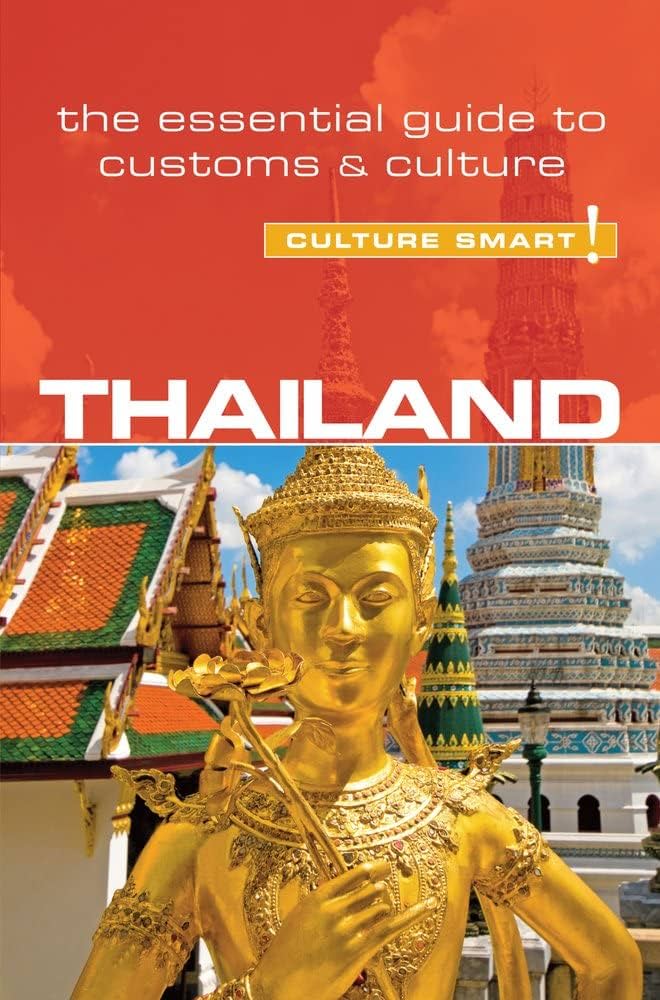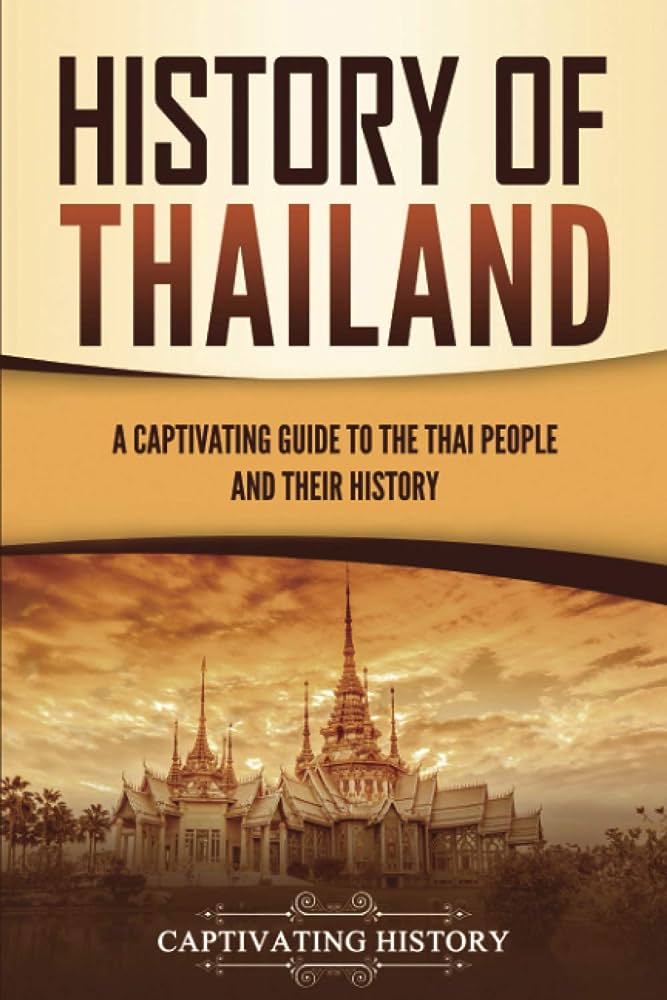Are you a fan of cultural exploration? Have you ever wanted to immerse yourself in the vibrant traditions and history of Thailand? Look no further! We present to you “Discovering the Cultural Heritage of Thailand in Books.” This unique product offers a curated collection of books that will transport you to the captivating world of Thai culture. From ancient temples to traditional festivals, this diverse range of literature will let you dive deep into the heart of this enchanting country without leaving your home. Get ready to embark on an exciting literary journey and broaden your understanding of Thailand’s rich heritage.

1. History of Thailand
Thailand, formerly known as Siam, boasts a rich and fascinating history that dates back thousands of years. From ancient civilizations to modern kingdoms, the country has experienced numerous changes and played a pivotal role in Southeast Asian history. The earliest evidence of human habitation in Thailand can be traced back to at least 40,000 years ago, and over the centuries, various empires, such as the Dvaravati, Khmer, and Ayutthaya, have risen and fallen.
One of the most significant periods in Thai history is the Sukhothai Kingdom, which was established in the 13th century and is considered the cradle of Thai civilization. It was during this time that the Thai script was developed and Theravada Buddhism became the dominant religion. The kingdom’s innovative political structure and cultural advancements laid the foundation for what is now modern-day Thailand.
In the 18th century, the powerful Kingdom of Ayutthaya, which had reigned for centuries, fell to the Burmese forces. However, the Thai people, under the leadership of General Taksin, regrouped and established the Thonburi Kingdom, which eventually led to the founding of the present-day Chakri Dynasty. This dynasty has seen several kings, including the revered King Rama IV and King Rama V, who played instrumental roles in modernizing Thailand and resisting European colonization.
2. Thai Literature
2.1 Classical Thai Literature
Thai literature holds a significant place in the country’s cultural heritage. Rooted in ancient folklore and religious beliefs, classical Thai literature incorporates elements of poetry, myths, and moral tales. One of the most famous works is the Ramakien, the Thai adaptation of the Indian epic, Ramayana. It narrates the adventures of Prince Rama, his wife Sita, and the monkey warrior Hanuman, embodying values of righteousness, loyalty, and honor.
Other notable works include “Khun Chang Khun Phaen,” a romantic epic often compared to Shakespeare’s Romeo and Juliet, and “Lilit Phra Lo,” a collection of traditional folktales. These literary treasures not only entertain but also provide insights into Thai societal norms, beliefs, and cultural values.
2.2 Contemporary Thai Literature
Thai literature continues to evolve, with modern-day authors adding their voices to the literary landscape. Writers such as Pramoedya Ananta Toer, Chart Korbjitti, and Saneh Sangsuk have gained international recognition for their thought-provoking novels, which explore themes such as social inequality, political turmoil, and personal identity. Through their works, these authors offer readers a window into contemporary Thai society and its challenges.

3. Cultural Traditions and Festivals
Thai culture is deeply rooted in tradition and is characterized by its unique customs and festivals. From the famous Songkran, the Thai New Year water festival, to Loy Krathong, the floating lantern celebration, these events provide an opportunity for locals and visitors alike to immerse themselves in Thai culture.
In addition to the widely celebrated festivals, there are numerous cultural traditions that are preserved and practiced throughout the country. The wai, a gesture of respect performed by placing one’s palms together, is a common sight in Thailand, and the importance of family and respect for elders is deeply ingrained in Thai society. Additionally, the concept of “sanuk,” meaning the pursuit of pleasure and fun, is deeply woven into the fabric of Thai culture, creating a joyful and lighthearted atmosphere.
4. Thai Cuisine and Cooking
Thai cuisine is renowned worldwide for its vibrant flavors and aromatic spices. From savory dishes like Tom Yum Goong (spicy shrimp soup) and Pad Thai (stir-fried noodles) to sweet treats such as Mango Sticky Rice and Khanom Buang (Thai crepes), Thai cuisine offers a diverse and tantalizing culinary experience.
The key to Thai cuisine lies in its delicate balance of sweet, sour, salty, and spicy flavors, which are achieved through the use of ingredients like lemongrass, lime leaves, chili peppers, and fish sauce. Whether indulging in street food at bustling night markets or dining at a high-end restaurant, the sheer variety of dishes and the explosion of flavors make Thai cuisine a true gastronomic delight.

5. Buddhist Temples and Architecture
Buddhism is the predominant religion in Thailand, and its influence is beautifully reflected in the country’s architecture, particularly in its temples, or “wat.” These sacred sites serve as spiritual retreats, cultural centers, and architectural marvels.
The architectural style of Thai temples is characterized by intricate carvings, ornate decorations, and distinctive rooflines. Wat Arun, also known as the Temple of Dawn, is a prime example of traditional Thai temple architecture, with its towering spires adorned with colorful porcelain tiles. Another iconic temple is Wat Phra Kaew in Bangkok, home to the revered Emerald Buddha and renowned for its intricate murals and golden stupas.
Visiting a Thai temple offers a chance to delve into the country’s spiritual heritage, witness the daily rituals of Buddhist monks, and gain a deeper understanding of Thai beliefs and values.
6. Thai Fine Arts and Crafts
6.1 Traditional Thai Painting
Thai traditional painting, often found adorning the walls of temples and palaces, is a captivating art form that has been passed down through generations. Utilizing natural pigments and gold leaf, Thai painters create intricate and colorful frescoes that depict religious scenes, mythical creatures, and historical events. These paintings not only showcase the artists’ technical skills but also serve as visual narratives of Thai history and culture.
6.2 Sculpture and Woodcarving
Thai sculpture and woodcarving are highly revered forms of artistic expression. Intricately carved statues of Buddha and mythical creatures can be found in temples and royal palaces across the country, showcasing the craftsmanship and attention to detail of Thai artisans. Woodcarving is also used in the creation of decorative items such as furniture, figurines, and ornamental panels, which often feature delicate floral motifs and intricate patterns.
6.3 Thai Silk and Textiles
Thai silk is renowned for its luxurious texture and vibrant colors. Silk weaving is an ancient tradition that has been practiced for centuries, and the intricate patterns and designs of Thai silk textiles are a testament to the skill and creativity of Thai weavers. From elegant silk sarongs, known as “pha sin,” to elaborate silk wall hangings and embroidered garments, Thai silk exemplifies the country’s artistic excellence and cultural heritage.

7. Traditional Thai Music and Dance
Thai music and dance are integral parts of Thai cultural expression and serve as vehicles for storytelling and entertainment. Traditional Thai music is characterized by its distinctive sounds, incorporating instruments such as the khim (a hammered dulcimer), piphat (a traditional ensemble), and ranat ek (a xylophone-like instrument). The delicate melodies and rhythmic patterns of Thai music create a serene and enchanting ambiance.
Thai dance forms, such as the classical Khon dance and the graceful Fawn Thai, showcase the elegance and precision of Thai performers. These art forms often depict scenes from ancient literature and mythology and are accompanied by traditional music and elaborate costumes. Attending a traditional Thai dance performance is an immersive experience that allows you to appreciate the beauty and grace of Thai culture.
8. Thai Martial Arts and Sports
Muay Thai, often referred to as “The Art of Eight Limbs,” is Thailand’s national sport and a martial art with a rich history and cultural significance. Combining strikes with punches, kicks, knees, and elbows, Muay Thai is not only a physically demanding sport but also embodies discipline, respect, and mental fortitude.
In addition to Muay Thai, various traditional martial arts and sports are practiced in Thailand. Takraw, a sport similar to volleyball but played with a rattan ball, showcases the agility and acrobatic skills of the players. Traditional martial arts such as Krabi Krabong and Muay Boran also have deep roots in Thai culture and are often performed as demonstrations of strength and skill during cultural events.

9. Thai Traditional Medicine and Healing Practices
Thai traditional medicine has a long history that dates back to ancient times. Influenced by Ayurvedic and Chinese medicine, Thai traditional medicine combines herbal remedies, massage, and spiritual rituals to promote overall well-being and balance. Traditional Thai massage, known as “Nuad Thai,” is a popular form of therapy that focuses on pressure points and energy pathways to alleviate physical and mental ailments.
In addition to massage, herbal remedies play a significant role in Thai traditional medicine. Various herbs and plants are used to create traditional remedies, such as herbal compresses and medicinal balms, which are believed to enhance healing and improve overall health. Thai traditional medicine is deeply rooted in the country’s cultural heritage and continues to be practiced alongside modern medical practices.
10. The Influence of Buddhism on Thai Culture
Buddhism, as the predominant religion in Thailand, has a profound influence on all aspects of Thai culture, including art, architecture, literature, and daily life. The teachings of Buddha, emphasizing compassion, mindfulness, and the pursuit of enlightenment, provide a guiding philosophy for many Thais.
Temples, or “wat,” serve as spiritual sanctuaries and are not only places of worship but also centers of education and community gathering. Thai people often make merit by offering food and alms to monks and participating in religious festivals and ceremonies. The principles of Buddhism, including respect for elders, kindness, and generosity, are deeply woven into Thai societal norms and values.
From the majestic temples and the intricate artwork to the cultural traditions and literary masterpieces, Thailand’s cultural heritage is a tapestry of influences that span centuries. Through exploring the history, traditions, and artistic expressions of Thailand, one can gain a deeper appreciation for the vibrant and diverse tapestry that is Thai culture. So, immerse yourself in the cultural wonders of Thailand and discover the richness that this captivating country has to offer.
